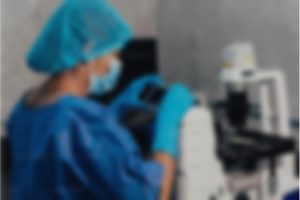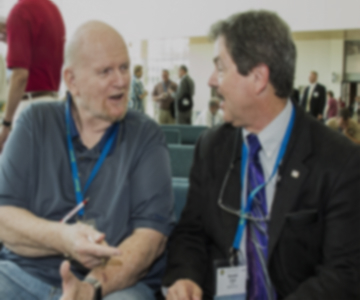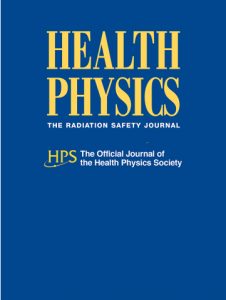I needed to have my parathyroid scanned and also a nuclear stress test done. Both tests were done a day apart. I think the dose they used was around 1,110 MBq of Tc-99m (99mTc) sestamibi on the first day. They scanned me two times and then put me in another machine and scanned my heart at rest.
The next day they put me on the treadmill and gave me 1,369 MBq of 99mTc sestamibi and then put me in a machine to scan my heart. I feel that I got a lot of radiation. I have a Geiger counter and I see I’m still quite radioactive two days later, although the number is going down. I was registering 8,000 mR h-1 12 hours after my second injection at a one-inch distance from my body and now 48 hours later I am registering 1,000 mR h-1. My question is, was that a safe amount? How does this much radiation affect my body? It seems to be going down slowly and may hang around a few more days.
This is a fairly frequent question from patients who have received various nuclear medicine scans. Some of the terminology in your question regarding your Geiger counter are probably not accurate because of the method used to calibrate the meter. Don’t feel bad. Radiation quantities and units are both unique and complex even for those with a scientific background outside the radiation protection profession. I’ll make some general assumptions that I hope will help answer your questions.
I calculated both your “effective dose” and looked up several references that provide estimates of the effective dose you received from these two nuclear medicine scans. The Society of Nuclear Medicine and Molecular Imaging (SNMMI) actually has a Nuclear Medicine Radiation Dose Tool that allows the entry of the administered dosage for a given radiopharmaceutical and it will provide an estimated effective dose for that particular situation. That tool was in good agreement with my calculations and other references. Using the SNMMI dose tool, the total effective dose you received from these two scans was about 24 millisieverts (mSv).
In order to answer your questions about how “safe” that amount is and what effect it would have on your body, let’s put 24 mSv in the appropriate context. According to the National Council on Radiation Protection and Measurements (NCRP), the average member of the US population receives about 3.11 mSv per year from “background” radiation (radiation from space, radioactive materials in the earth and building materials, and the largest contributor, radon) (NCRP 2009). If one lives in different areas of the country (e.g., in Colorado), that average annual effective dose is larger. So, these two scans resulted in your receiving about what the average member of the United States receives in about eight years. It sounds like a lot, but it’s not really.
Federal and state regulations allow individuals who work with radiation (e.g., nuclear medicine doctors and technologists, x-ray technologists, radiologists, nuclear power plant workers, etc.) to receive 50 mSv every year they work. So, you received less than half of what radiation workers can legally receive every year.
Now come the most important points—based upon a number of reviews of the “cause and effect” relationship between radiation and what it does to your body, any effects from radiation doses of less than 100 mSv cannot be statistically proven to exist (HPS 2016). While there are “assumptions” that some effects might exist at lower doses, they just haven’t been observed in human populations. Furthermore, you would need to balance any “assumed” risk of an effect from the radiation dose you received with the “benefit” that you received from the nuclear medicine scans. Presumably, your doctor had a concern about your heart. Otherwise, he or she wouldn’t have requested the scans. If the scans showed no problem with your heart, that helped your doctor eliminate that as a health issue. If the scans show that you have a heart problem, that allows the doctor to properly treat you—obviously, this is a very important point when compared to an assumed risk that can’t be proven to even exist.
The exposure rates you measured with your Geiger counter are a bit puzzling. From what I could understand from your questions, it appears as though you took measurements at one inch from your body, but you didn’t indicate where on your body those measurements were taken. The radiopharmaceutical gets distributed in various organs throughout your body but wouldn’t be the same everywhere. There are some other issues that might affect your measurements.
Some Geiger counters have a scale setting switch that multiplies the reading on the instrument by the scale setting. Also, mR h-1 generally means, “milliroentgens per hour”; however, I’ve seen individuals use mR h-1 to mean “microroentgens per hour”—there are 1,000 microroentgens in 1 milliroentgen (or 0.001 milliroentgens in 1 microroentgen), so that can sometimes lead to confusion. Also, some Geiger counters can overrespond (meaning that they read higher than the true exposure rate) due to energy dependency of the instrument. Geiger counters also should be calibrated at least annually to assure they are displaying the measured radiation levels correctly. Without actually seeing the instrument or knowing how you took your measurements, I can’t really judge if any of these issues affected the measured values you mentioned in your question.
In summary, the radiation dose you received from these scans was well below what would be expected to show any statistically significant risk and the benefit from the information your doctor received from the scans, more than outweighed any “assumed” risk. I hope that this is helpful.
Mack L. Richard, MS, CHP
References
Health Physics Society. Position Statement of the Health Physics Society. Radiation risk in perspective. Revised May 2016.
National Council on Radiation Protection and Measurements. Ionizing radiation exposure of the population of the United States. Bethesda, MD: NCRP; NCRP Report No. 160; 2009.
Answer posted on 13 July 2018. The information posted on this web page is intended as general reference information only. Specific facts and circumstances may affect the applicability of concepts, materials, and information described herein. The information provided is not a substitute for professional advice and should not be relied upon in the absence of such professional advice. To the best of our knowledge, answers are correct at the time they are posted. Be advised that over time, requirements could change, new data could be made available, and Internet links could change, affecting the correctness of the answers. Answers are the professional opinions of the expert responding to each question; they do not necessarily represent the position of the Health Physics Society.






